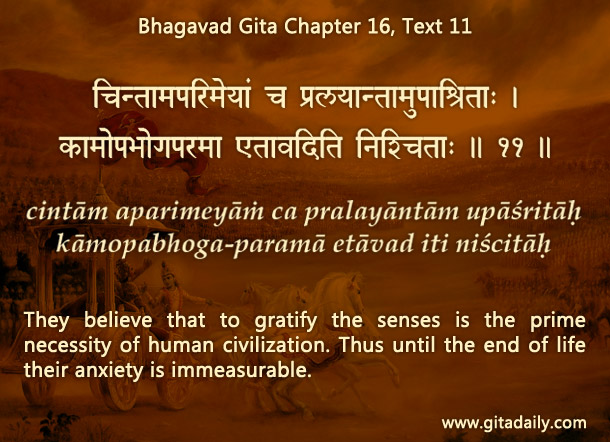We live in an age that cherishes freedom and abhors slavery. If anywhere we hear of anyone being enslaved, we often feel dismayed, if not enraged.
Yet we don’t often realize that we ourselves are enslaved. Of course, our bonds are not visible and physical – if they had been, we would have rebelled against them long ago. But the bonds that enslave us are subtle, invisible and psychological. They are the shackles of desires, as the Bhagavad-gita (16.11) indicates.
Our desires for worldly objects create a knot between that object and our mind. Consider for example smokers – it’s as if there’s a rope that pulls them to a cigarette. They may not notice it till they try to give it up. Significantly, even if they resolve to give up smoking, that in and of itself doesn’t free them from the bondage – to the contrary, the tug of the desire often seems to increase. And they often give in feeling that the desire is too much trouble to resist.
The same principle applies to whatever our attachment may be. Because the bondage is psychological, the freedom also has to be psychological. That is, we need to recognize that what actuated the bondage was not the physical indulgence, but the mental craving. And the more we crave, the more the rope of bondage thickens and tightens because the desire becomes stronger.
That’s why we need to work on countering the shackle not just at the physical but also at the mental level. And that’s where bhakti-yoga offers a decisive advantage. It offers us an eminently desirable object to redirect our longing: the all-attractive supreme person Krishna.
By understanding Krishna’s glory, beauty and mercy, we can increase our desire for him, thereby getting freedom from worldly bondage as a byproduct.
Explanation of article:


Leave A Comment